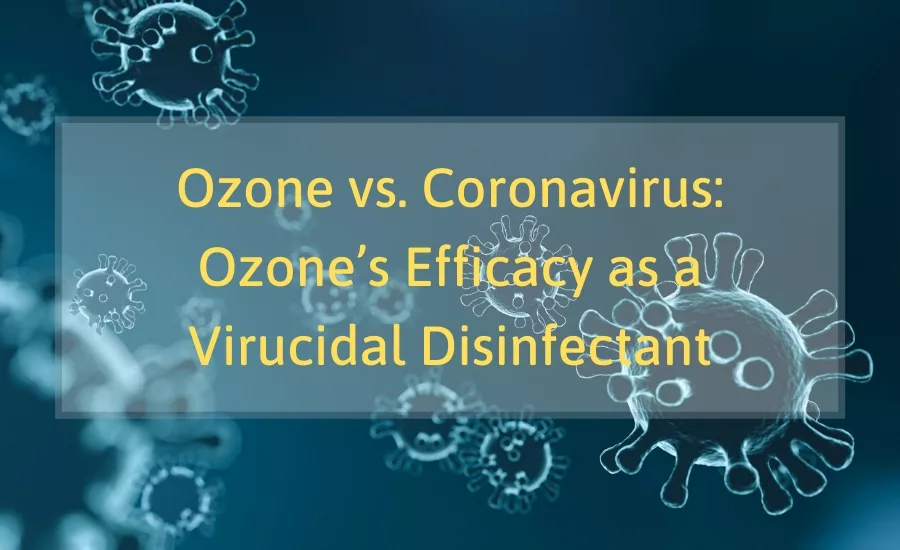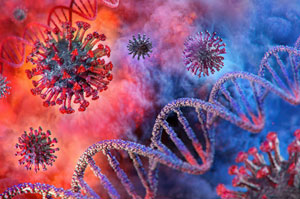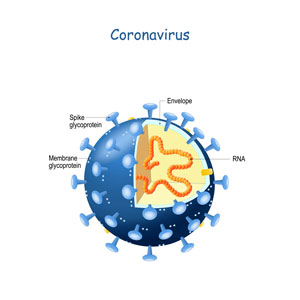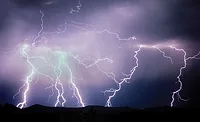Ozone vs. Coronavirus: Ozone’s Efficacy as a Virucidal Disinfectant

It’s no secret in the cleaning and disaster restoration industry that ozone is extremely effective at removing odors through molecular oxidation. Lesser known is its efficacy as a disinfectant, for which it has been used effectively in the medical field for many years. A powerful gas capable of high levels of disinfection, ozone can be very effective at killing pathogenic bacteria and fungi, as well as for inactivating viruses. The focus of this article is the use of ozone as a virucide, with emphasis on the SARS-CoV-2, which, according to the International Committee on Taxonomy, is the accurate name for what is commonly referred to as the COVID-19 coronavirus, and is how it will be referenced in this article.
What is a virus?
Quoting the National Institute of Health: “A virus is an infectious agent that occupies a place near the boundary between the living and the nonliving. It is a particle much smaller than a bacterial cell, consisting of a small genome of either DNA or RNA surrounded by a protein coat. Viruses enter host cells and hijack the enzymes and materials of the host cells to make more copies of themselves. Viruses cause a wide variety of diseases in plants and animals, including AIDS, measles, smallpox, and polio”, and of course the various strains of coronavirus, including SARS-CoV-2[1] .
They can enter the body through the nose, mouth or breaks in the skin. Different viruses infect different types of cells based upon the ability of the virus to both recognize the host cell type and successfully enter the cells. Once inside (infection), virus genome is activated to produce the replication proteins necessary to create new virus particles, and the cycle is repeated. For example, cold and flu viruses will attack cells that line the respiratory or digestive tracts. Norovirus, for example, invades the gastro-intestinal tract. The cells of the lungs and bronchi are targets for SARS-CoV-2.
Viruses can stay active on surfaces for different amounts of time, depending on the virus, the surface type, and the environment. Cold viruses can remain active on surfaces for up to a week, while flu viruses can survive for about 24 hours, and the SARS-CoV-2 virus remains active for about 72 hours. It’s during this time that the virus is quietly adherent to surfaces, waiting to be taken up by a passing host, that restorers have their opportunity to intervene.
Let’s set the record straight in regard to the correct language for destroying viruses before we “put ‘em in the ring” with ozone. Depending on with whom you speak, you’ll hear somebody say they’re “killing the virus”. Other common terms are deactivating and inactivating.
Which is correct?
As we’ve already discussed, viruses are not living organisms in the traditional sense - they are not made of cells, they cannot reproduce without invading a host cell, they do not respond to environmental stimuli, and they have no metabolism. Because a virus is not “alive” in the first place, it therefore cannot be “killed”. References to killed virus in the medical literature refer to a technique where virus are chemically or mechanically inactivated so that they can be used in the production of vaccines or used in research without the possibility of causing infection, or in our case, to disinfect a surface or space. It is in this sense that we are using the term “inactivating”, where we are using ozone to chemically treat a virus so that it cannot infect living cells.

How does ozone inactivate viruses?
To address this question, I reached out to some of the most knowledgeable doctors on the topic of ozone and viruses in the country. Dr. Gérard Sunnen is a medical doctor in New York City, specializing in the uses of ozone in the medical field, ranging from cutting-edge ozone therapy to the use of ozone as a disinfectant. According to Dr. Sunnen. “Ozone has unique disinfectant properties. As a gas, it has a penetration capacity that liquids do not possess. In view of the fact that , SARS-CoV-2, MERS, and previous SARS strains persist on fomites (surfaces) for up to several days, it is suggested that ozone technology be applied to the decontamination of medical and other environments”.
Knowing that something works isn’t enough; let’s look at how ozone works at inactivating viruses. “Typically, viruses are small, independent particles, built of crystals and macromolecules. Unlike bacteria, they multiply only within the host cell. Ozone destroys viruses by diffusing through the protein coat into the nucleic acid core, resulting in damage of the viral RNA. At higher concentrations, ozone destroys the capsid or exterior protein shell by oxidation” explains Dr. Sunnen. Further, “most research efforts on ozone's virucidal effects have centered upon ozone's propensity to break apart lipid molecules at sites of multiple bond configuration. Indeed, once the lipid envelope of the virus is fragmented, its DNA or RNA core cannot survive”.
In my quest for further communication with experts in the field, I reached out to a director for the Center for Disease Control (CDC), Dr. Paul Meechan PhD, MPH, RPB, CBSP, SM(NRCM). I asked him his thoughts on ozone as a virucide, especially in regard to SARS-CoV-2. He responded, “Will ozone work- you betcha! Ozone is very effective at inactivating viruses, especially enveloped viruses like the SARS-CoV-2. Within seconds, ozone solubilizes the lipid membrane of the virus. Ozone will inactivate SARS-CoV-2, but you have to know what you're doing.

How much ozone is required to be effective?
Log reduction is a mathematical term that is used to express the relative number of living microbes or active viruses that are eliminated by disinfection, and corresponds to inactivating 90% of a target microbe with the microbe count being reduced by a factor of 10. Thus, a 2 Log reduction will see a 99% reduction, or microbe reduction by a factor of 100, and so on. The table below shows the chart of Log reduction.
| Log Reduction | Reduction Factor | Percent Reduced |
| 1 | 10 | 90% |
| 2 | 100 | 99% |
| 3 | 1,000 | 99.9% |
| 4 | 10,000 | 99.99% |
| 5 | 100,000 | 99.999% |
| 6 | 1,000,000 | 99.9999% |
An easy way I remember this scale is that the number of nines is equal to the Log reduction number. For example, 1 Log = 90%, 3 Logs = 99.9, 5 Logs = 99.999, etc.
Depending on the virus targeted, concentration and exposure time varies. Considering the structure of SARS-CoV-2, and how like viruses respond to ozone exposure, it is estimated that as little as 1 ppm concentration for a matter of seconds is sufficient to achieve as much as 4 logs disinfection. A good quality ozone generator should have no problem reaching this concentration within a short period of time.
Ozone level output is key; generators are rated by the grams of ozone they generate per hour (g/hr). To test the time required to achieve 1 ppm concentration, we used RamAir’s OzoGen 16g, which has an output of 16 g/hr. Our laboratory consisted of a 1000 ft.³ space, at 65° F and 14% RH (relative humidity). The generator achieved .5 ppm in 15 seconds, and 1 ppm in < 2 minutes. As ozone generators convert ambient oxygen into ozone by way of molecular fission and fusion, the rate of output slows as the concentration elevates, resulting from a continuous depletion of available O2 molecules in the enclosed space. Therefore, peak ozone generation is directly dependent on the power of the ozone generator, as lesser systems would plateau at a lower ozone concentration. High power ozone generators also have the benefit of achieving effective concentrations more quickly, which allows for greater overall utility and benefit.
David Hart, alongside a select team of doctors and scientists, is spearheading a rigorous testing program to acquire precise data on ozone’s inactivation of specific strains of pathogenic bacteria, fungi and viruses, in regard to concentration and exposure times.
To Summarize
Ozone, having been proven in the lab and in the field to be an extremely effective virucide and full-spectrum antimicrobial, killing pathogenic bacteria and fungi, offers many benefits over alternative ways of disinfecting.
Because it is a gas, it has a penetration capacity that liquids do not possess. An ozone generator never needs to be refilled with solutions, and it doesn’t need to be manually operated; simply set the timer and press the button. The machine goes to work turning the oxygen in the ambient air into powerful, oxidizing ozone. You return after the prescribed period of time, and the disinfection is complete.
Thank you to Dr. Gérard Sunnen, Dr. Paul Meechan, and Paul Glidden, PhD for their valuable contributions to this article.
Looking for a reprint of this article?
From high-res PDFs to custom plaques, order your copy today!





